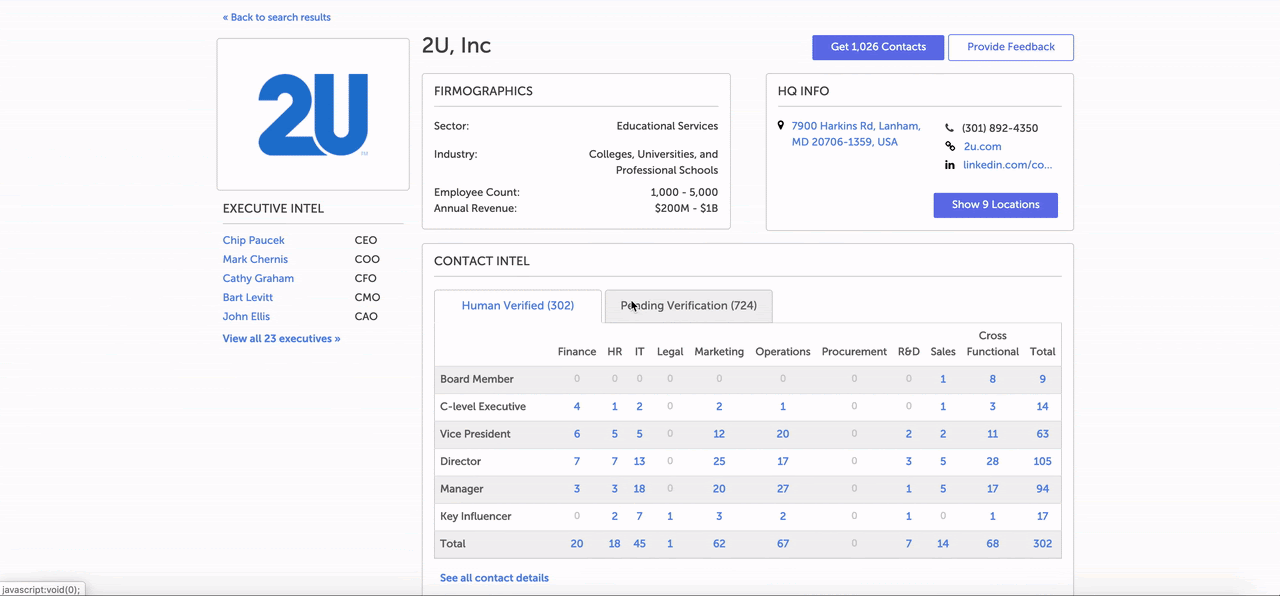So, what is the first thing that occurs to you when you start brainstorming about your B2B sales strategy?
Target Audience? Plan? Resources? Tools? Investment? ROI?
What are the latest challenges in B2B sales strategies ?
The latest B2B sales challenges include:
- Difficulty in reaching decision makers and engaging with them effectively.
- Competition from alternative solutions and an increasing number of suppliers.
- Shifting buyer preferences and behaviors, leading to a need for a more personalized and customer-centric approach.
- The increasing importance of data and technology in the sales process, leading to a need for sales teams to be tech-savvy.
- Changing economic conditions, which can impact the budget and priorities of potential buyers.
- Maintaining trust and credibility in a virtual sales environment.
Build Strong B2B Sales Strategies: 5 Mistakes to Avoid in 2024
Lead generation is akin to a high-stakes chess game. Every move counts, and one wrong step can lead to checkmate. Despite meticulous planning, many businesses find themselves grappling with failed lead-generation strategies. But why do these B2B sales strategies falter?
Let’s delve into five critical mistakes to avoid in 2024:
1. Neglecting the Personal Touch
In our tech-driven world, the allure of automation can be overwhelming. Yet, amidst algorithms and autoresponders, the power of personal connections often gets sidelined. Behind every email and every call lies a human being with emotions, preferences, and needs. To excel in B2B sales, it’s essential to nurture genuine interactions. Remember, people crave authenticity.
2. Overlooking A/B Testing
A/B testing, often an unsung hero in marketing strategies, holds immense potential. It’s akin to standing before two doors on a game show – the only way to know what lies behind is by opening both. Testing different approaches enables businesses to discern what resonates with their audience. Ignoring this invaluable tool can lead to missed opportunities and ineffective campaigns.
3. Ignoring Data Insights
Data is the compass guiding businesses through the vast sea of sales and marketing. Yet, many businesses fall short by not fully leveraging the wealth of B2B data available to them. Intent data, in particular, holds immense potential in driving more sales.
For example, suppose a prospect from a manufacturing company starts frequently researching software solutions for supply chain optimization. Armed with this intent data, a B2B seller can tailor their messaging to highlight the specific benefits of their supply chain software, thereby capturing the prospect’s interest more effectively.
By harnessing the power of intent data, businesses can identify promising leads, tailor their approach to individual preferences, and ultimately drive more sales. Failure to leverage this valuable resource represents a missed opportunity in the ever-evolving landscape of B2B sales.
4. Chasing Quantity Over Quality
The appeal of skyrocketing lead numbers can be intoxicating. However, not all leads are created equal. Pursuing quantity over quality is akin to casting a wide net while fishing – sure, you may catch more, but are they the proper catch?
Intent data provides invaluable insights into the behavior and interests of potential buyers. By analyzing online activities such as searches, downloads, and website visits, businesses can gain a deeper understanding of prospect intent. This allows for more targeted and personalized outreach, increasing the likelihood of conversion.
5. Forgetting the Follow-Up
The journey doesn’t end once initial contact is established. Yet, all too often, businesses falter at the follow-up stage. A lack of follow-up is akin to a promising first date followed by radio silence – frustrating and ultimately detrimental. Effective B2B sales strategies necessitate consistent and proactive follow-up, demonstrating continued interest and commitment to nurturing the relationship.
So, how do businesses sidestep these common pitfalls?
The answer lies in the below top ten B2B sales strategies that we will explain, from maintaining a human touch, embracing testing, and leveraging data insights to inform decisions.
#1: Sales Strategies for Generating New Leads
The best way to maintain consistent revenue generation and grow clientele for B2B businesses is to reach untapped audiences.
Selling tactics are very critical, as a lead database usually degrades by about 22.5% each year. This means salespeople need to look for ways to tap into new prospects and get them into the sales funnel.
It takes time to identify and reach new leads. This is where SalesIntel helps you with accurate B2B data that includes the contact information of your prospects along with additional company information like demographic and technographic data.
#2: Sales Strategies for Repeat Business
This is a no-brainer. This type of strategy focuses on generating repeat business from your existing customers. While this may seem easy, it still needs a well-organized approach as existing customers often create a new list of terms and conditions when becoming repeat businesses.
Cross-sells and upsells are all a part of this approach. The advantage is that the customer already knows and has trust in your product or service.
Thus, repeat customers are more likely to buy from you, compared to the leads who are just checking out your website or exploring your product.
#3 Sales Strategies for Lead Conversion
Business to business sales strategies focuses on improving the lead-to-customer conversion rate. This type of strategy needs teamwork between marketing and sales teams. While the marketing team needs to generate sales qualified leads, the sales team needs to capitalize on the opportunities created by the marketing team.
The key is to optimize your sales process and get better at giving presentations, handling objections, lead-nurturing, and more.
10 B2B Sales Strategies for Building a Better Sales Pipeline
1. Sales and Marketing Winning Together
When sales and marketing departments are on the same page, it results in more leads and revenue.
While the sales team needs to acquire new customers to ensure steady revenue growth, the marketing team needs to support them with qualified b2b lead generation.
While social media may appear to be a marketing-specific activity, it can be a very powerful tool for sales teams to identify potential customers and engage with them. The sales team can help the social media marketing team to identify ideal customers and the challenges they face, which can be useful while drafting the ads and social posts. Conversely, the marketing team can help identify key conversations and targets that appear on social media and pass those to salespeople to reach out to.
Generating leads from your website using SEO tactics to fill the sales pipeline is another great way to boost sales.
Both teams can collaborate to create a content marketing strategy. Sales reps often talk to the prospects daily and understand their challenges. Such inputs can help the marketing team to produce content around those challenges to create more engagement.
2. Prepare Before You Approach Your Audience
Use the time leading up to a presentation to explore and appreciate the specific functionality or solutions a lead is searching for while evaluating a solution.
You can analyze the social media profiles of your prospects, and review their activity data (if available) in your CRM.
For instance, If you sell software, you might even test its ratings on platforms like G2 Crowd. You can do it simply by searching for “[prospect name] + G2 Crowd” to get a better understanding of their current needs.
Another way is to use SalesIntel which allows you to get additional technographic information to understand the tools and technologies they are already using.

3. Create a Follow-Up Plan
Creating a follow-up plan might sound like another simple selling tactic, but after the first touch, half of all salespeople don’t follow up with the lead. As a result, you might miss a good opportunity to close a deal.
Now consider the amount of revenue that is lost in this way. Nearly 80% of companies need a sales rep to make at least 5 follow-ups. Not only that, many sales reps believe it takes about eight follow-ups to connect with a prospect.
Following up with a lead after the first approach is typically a good move. Being consistent tells the lead they are seen as a valued customer. Moreover, since decision-makers are busy, a quick and brief email follow-up is a good way to get their attention.
If you use a CRM, you can automate your follow up-emails so that you can easily set them up to deliver at set intervals. Even better is to set reminders for follow-up so that you can customize your messaging instead of relying on generic automated messages.
Read Now – Alternatives to Zoominfo
4. Develop a Lead-Nurturing Plan
If your prospects are not ready to buy today, that doesn’t mean they will never buy. Instead, if you approach them today, there are possibilities that they will start brainstorming about your product or service.
You risk losing a lot of your future business unless you have a plan to nurture those leads and help them make up their minds about buying.
Here’s where a plan to nurture leads helps.
Developing a nurturing strategy helps you sell these leads by warming them up.
So how do you run a lead-nurturing program? The key is building a steady stream of value-add content to keep them interested and engaged.
5. Account-Based Marketing
Your prospect or lead quality determines how good you will be at the sale.
One common mistake is to think of every industry as a target market. And so instead of having segments of leads from the various industries that you serve, you end up with a homogeneous database with leads from every industry that you cater for.
The problem with this approach is that you can’t do honest and personalized selling at scale.
What you need to do is identify the select few industries you serve particularly well and use account-based marketing techniques. This approach will help you to fine-tune your sales strategies just for that industry.
For instance, if you are an accounting SaaS service provider, who will be your target audience?
All the companies that need SaaS services?
No.
There are SaaS service providers with a particular offering, say, hiring solutions and there are SaaS service providers who offer CRM services. Thus, wasting your efforts on all SaaS businesses will not work. As a result, you need an account-based marketing approach.
SalesIntel has been a preferred B2B data provider for account-based teams. With a wide range of filters, SalesIntel helps you to work on specific accounts that match your marketing and sales criteria.
Let’s get to use statistics that will encourage you to add social media to your business to business sales strategy.
- 82% of prospects are okay with being reached out to via social networks.
- About 73% of prospects engage with a vendor on social media.
Not only that, sales reps who regularly use social media outperform those that don’t.
When it comes to social sales, the only caveat is that your posts need to be truthful and personalized— otherwise, you risk looking disingenuous or even creepy. So, use sales socially but with caution.
7. Identify the Opportunity for Repeat Business
While existing customers of an organization are responsible for its profits, they are taken for granted by many businesses.
Rather than trying to expand on and maintain the business-client relationship with existing clients, sales professionals are chasing new leads that are far easier to sell to.
It is essential to maintain and win their loyalty to improve the revenue from current customers.
A good way to do that is to keep checking in with salespeople and find out if they need help with something. The duty in many businesses rests mainly with the customer service team.
But since a salesperson is always one of a client’s first interactions with a product, they often feel good about hearing “non-sales” stuff from them.
Salespeople can keep them warm for learning about new deals or plans by keeping in touch in unselfish ways like just sharing a positive article or sending out a quick personalized letter.
8. Ask for Referrals
You will be shocked to learn that about 91% of consumers are open to giving referrals, but just 11% of salespeople are actively seeking referrals.
Additionally, 84% of B2B executives launch their buying journey based on a referral — meaning, not finding referrals is a major wasted sales opportunity.
It’s much easier to obtain referrals because you are already linked to the decision-maker and someone they trust has already suggested your name to them.
To seek referrals, ask your reps to send all closed customers a request for referrals in a follow-up note.
9. Focus on Sales Experience throughout the Buyer’s Journey
Do you know the sales experience throughout the buyer’s journey? Do you know why you lose a qualified lead after coming a long way?
Most people think about pricing. But lead qualification is also key. You need to study the potential of the lead to pay before nurturing them.
Many potential accounts look at the value and experience you offer during the buying process. Most deals are lost due to a bad selling experience throughout the sales process.
It is important to create a winning sales experience. To start with, you should try to understand the following points first:
- What are their key challenges, pain points, motivations, and fears?
- What influences their decisions?
- Do they prefer communication over calls or emails? Respect their preference.
- Their convenient time to contact them.
- What type of content or information do they need to make the decision?
You can also offer a better buyer experience by encouraging your sales reps via healthy competition or gamification. Give them the best sales tools (such as lead platforms like SaleIntel, a CRM, and other productivity tools), and generous incentives.
You can start with free B2B data tools like RevDriver which helps you get the contact and company details of your prospects while visiting their Linkedin profile or company page.
10. Set a Feedback Process from Lost Leads
Every lost lead is an opportunity to analyze and improve your sales process. However, SDRs often avoid following up on lost deals.
As a result, they lose the opportunity to find loose strings in their selling processes.
Of course, there are times when it’s just not a good idea, but more often than not there are legitimate reasons when leads don’t convert.
Ideally, once a lead turns you down, you should follow up to learn the reason for not choosing you. Give them a survey to ask which service provider they’ve been with and why, and what should be changed with the selling cycle.
In this way, you’ll learn about all the leaks in your sales process. You also never know when that feedback may give you an opportunity to adjust your pitch and still advance the deal.
B2B Sales Strategies FAQ
What is B2B sales?
B2B sales stands for “business-to-business sales” and refers to the process of selling products or services from one business to another. B2B sales typically involve large organizations, as opposed to individual consumers, as the end customers. The products or services sold in B2B transactions can be raw materials, components, or finished goods used in the production of other goods or services. The goal of B2B sales is to establish long-term relationships between the selling and buying organizations to drive repeat business and mutual growth.
What is B2B Sales Strategy?
B2B sales strategy refers to a company’s plan for selling products or services to other businesses. It involves researching the target market, developing a sales process, building long-term relationships, and continuously improving based on performance analysis. A successful B2B sales strategy is key to generating revenue and growing a business.
Why B2B Sales Hard?
B2B sales can be challenging as it involves a lot of different decision-makers, extended sales cycles with several touchpoints, and if the sales team doesn’t have reliable data then it creates plenty of possibilities for errors.
What are the Four Types of B2B Selling?
Transactional selling is a frequent business to business sales strategy in which a sales professional searches out prospects, build a connection, and then attempts to complete a transaction.
Solution selling focuses on the needs of the consumer instead of focusing just on the goods.
Consultative selling focuses on client connections and needs-based discussion.
Proactive selling focuses on making clients aware of problems they were unaware of.
Wrapping Up
Of course, there are times when it’s simply not a perfect situation for someone to purchase your solution. But there are more often valid excuses why leads don’t turn around.
Ideally, just follow up when a lead turns you down. Send them a survey to ask which service provider they’ve been with and why, and what could be improved on your sales process.





